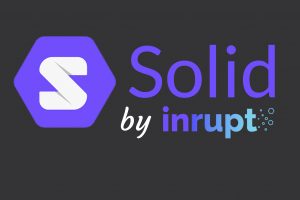Sylvain Le Bon is co-founder of the Startin’blox cooperative, which has developed an open source technology based on W3C standards, allowing the creation of applications for data spaces. He gives us an insight into the origins and evolution of web standards. That’s why Startin’blox interviewed Sylvain Le Bon.
Can you go back to the origins of the web and its standards?
We are at the end of the 1980s and Tim Berners-Lee is an engineer at Cern, at a time when all researchers use computers but data exchange is quite complex. He is a data specialist who is well aware that there are data everywhere but that they are very difficult to access. He then has a rather vague idea, that of a world wide web, a global web of information. He mentions it in a funding request, on the margin of which his boss, Mike Sendall, says “vague but exciting”.
What Tim Bernard-Lee invents is technically not very extraordinary: he makes a language of tags a little simplified so that it is easy to adopt and a rather basic protocol so that a software can access documents. But what it does above all is to formalize the URL, i.e. the fact that a given document has a universal address, and hypertext, the fact that texts can contain a link to other documents. This is what creates the world wide web: it is the fact that documents can be referenced to each other, based on open standards. This openness of the standards allowed the web to impose itself in the early 1990’s compared to other alternatives, now completely forgotten. The World Wide Web quickly took hold in the world of researchers, for whom it was a common documentary space.
And quite quickly the W3C (World Wide Web Consortium) was created, which was responsible for these new standards. In particular, it standardized the computer languages HTML and CSS.
We sometimes hear about the semantic web, or web of data, which would be the continuation of the world wide web of the 1990s. What is it about?
Tim Berners-Lee continued to work on the standardization of data and this work gave birth to the semantic web. It is based on a standardization of data representation. All data is described in the form of a triplet: subject, predicate, object. These subjects, predicates and certain objects have the particularity of being referenced by an identifier which is a universal URL. It allows to represent in a unique and universal way an information. So we have a data space where the data has a universal value, independently of who stores it. The web becomes a huge database.
The key standard is RDF (Resource Description Framework). Released in 2004, it allows to describe all web data. But it is not enough to use a universal identifier. It does not solve the question of how to authenticate on a server, how to structure data within a server or how to make requests. So there are dozens of standards that have been published since 2004 by the W3C. All this family of standards is grouped under the name Solid, which allows the implementation of a decentralized web, where users have control over their data, and where applications can access the data wherever they are to get all the value.
Startin’blox technology is based on the SOLID set of standards. Can you tell us a few words about it?
The work of the W3C resulted in 2016 in Solid. From the moment we agree to structure data in compliance with these standards, we see the web differently: on the one hand we have data storage spaces, on the other hand applications that can access them. Any web application can access any data on any server. SOLID is about data structure, data storage, data authentication… Its magic is to consider all these elements to make data accessible by any application.
We have therefore developed a technology that makes it very easy to build applications that respect these standards. An application can therefore connect to the data of all partners who use the same data representation.
Startin’blox makes it very easy to build applications that can access all the data in a data space, promoting collaboration between partners, without requiring a “platform” intermediary to centralize the ecosystem.



